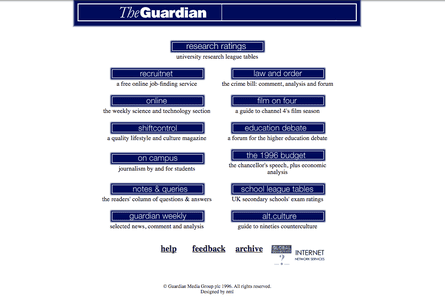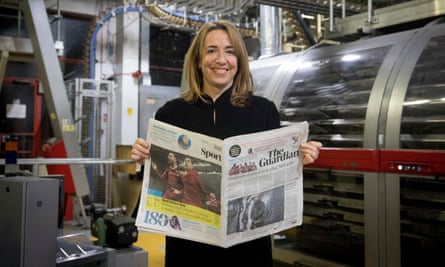Today, our newspaper is being printed in a new tabloid format for the first time, a decision we took seven months ago. We decided then that we also wanted to redesign the Guardian for our global readership online – to create a beautiful new design that works for readers across mobile, apps and desktop. It’s been an exhilarating period of creativity, imagination and focus, and we’re thrilled with the result. We hope you like it.
At the Guardian we have a special relationship with our readers. This relationship is not just about the news; it’s about a shared sense of purpose and a commitment to understand and illuminate our times. We feel a deep sense of duty and responsibility to our readers to honour the trust you place in us.
Quick Guide A Guardian timeline
Show

1821
In April, a prospectus announces a new paper for Manchester. A month later, on 5 May 1821, John Edward Taylor publishes the first Manchester Guardian as a newspaper in the liberal interest.
1872
Charles Prestwich Scott, a liberal thinker with strong principles, becomes editor of the Guardian - a post he holds for 57 years.
1907
CP Scott buys the Guardian, becoming both owner and editor.
1921
CP Scott writes a leading article to mark the centenary of the paper that becomes recognised around the world as the blueprint for independent journalism and includes the line “Comment is free, but facts are sacred.”
1929
CP Scott retires as editor in favour of his son Ted.
1932
CP Scott’s death in January is followed swiftly by that of his younger son; Ted Scott is killed in a tragic boating accident in April. William Percival Crozier is appointed as editor.
1936
Ownership of the Manchester Guardian is transferred to the Scott Trust to protect the paper, its independence and the journalistic principles of CP Scott.
1944
Following WP Crozier’s death, Alfred Powell Wadsworth becomes editor.
1956
Alastair Hetherington becomes editor following Wadsworth’s death.
1959
On 24 August the newspaper changes its title from the Manchester Guardian to the Guardian, to reflect the growing importance of national and international affairs in the newspaper.
1964
The editor’s office and major editorial departments relocate from Manchester to London.
1975
Peter Preston is appointed editor.
1988
The Guardian has a radical redesign, splitting the newspaper into two sections and introducing a new masthead.
1995
Alan Rusbridger becomes editor.
1999
Guardian Unlimited (GU) network of websites is launched.
2005
The mid-sized Berliner format newspaper launched. It is the UK's first full-colour national newspaper.
2011
A new digital operation, Guardian US, is launched in New York as a hub for Guardian readers in the US.
2013
The Guardian launches Australian digital edition, Guardian Australia.
2015
Katharine Viner is appointed Guardian editor-in-chief.
2018
The Guardian and Observer newspapers launch in a new tabloid format and the website and apps are given a redesign.
-
We have grounded our new editions in the qualities readers value most in Guardian journalism: clarity, in a world where facts should be sacred but are too often overlooked; imagination, in an age in which people yearn for new ideas and fresh alternatives to the way things are.
These hopeful themes of clarity and imagination have also been our guiding principles as the Guardian’s new design has taken shape. For several months, a team including our exceptional creative director Alex Breuer and senior editors and designers have been discussing and refining the Guardian’s new look, as well as gathering invaluable feedback from readers.

We have thought carefully about how our use of typography, colour and images can support and enhance Guardian journalism. We have introduced a font called Guardian Headline that is simple, confident and impactful. This was a collaboration with the design experts Commercial Type, who created the original Guardian Egyptian, and is easier to read. We’re using a range of energetic colours, and the much-loved Guardian visual wit and style remain at the heart of the look. The masthead has a renewed strength and confidence to represent the Guardian’s place and mission in these challenging times.

Guardian journalism itself will remain what it has always been: thoughtful, progressive, fiercely independent and challenging; and also witty, stylish and fun.
As you may know, my predecessor but one as editor of the Guardian, Peter Preston, died last week, which was very sad news for all of us at the Guardian. Peter was a brilliant editor, like his successor, Alan Rusbridger, and also a highly innovative one: he was editor when we first published on the web back in 1994. Peter always strived to make sure that, as he put it, the Guardian had pace, impact, and what he called “zing”. Our new design has all of those things.

Readers in the UK can buy a copy of the paper in its new tabloid format from Monday; if you’re an app user, you may need to update it to see the new design. The app is free, and is available here (iOS) or here (Android users).
Let us know what you think.
Katharine Viner
Editor-in-chief










